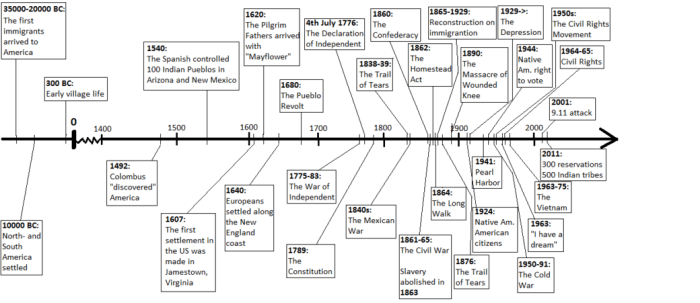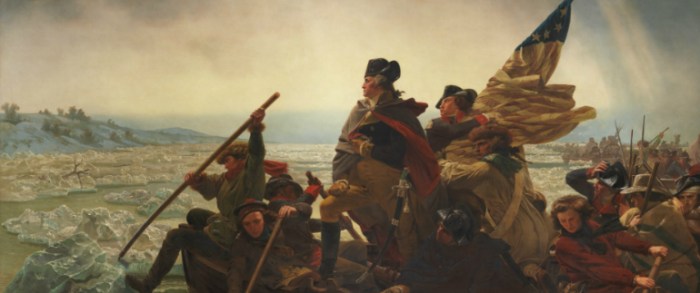American history 1492 to 1877 – Embark on an extraordinary journey through American history from 1492 to 1877, where European exploration, revolution, and nation-building intertwine in a captivating narrative. From the arrival of Columbus to the transformative Civil War and Reconstruction era, this era shaped the destiny of a nation.
Prepare to encounter the motivations of European explorers, the struggles of Native American populations, and the birth of a new nation amidst the tumult of the American Revolution. Witness the challenges and triumphs of the early republic, the westward expansion that redefined the nation’s boundaries, and the Civil War that tested the very fabric of American society.
European Exploration and Colonization

Driven by a thirst for wealth, power, and knowledge, European nations embarked on a wave of exploration and colonization that profoundly shaped the course of world history. Their motivations ranged from the pursuit of gold and spices to the desire to spread Christianity and establish new markets.
The major European powers involved in colonization included Spain, Portugal, England, France, and the Netherlands. These countries established colonies in the Americas, Africa, and Asia, exploiting the resources and labor of indigenous populations.
Impact on Native American Populations
The arrival of European colonizers had a devastating impact on Native American populations. Disease, warfare, and displacement decimated their numbers and disrupted their way of life. The introduction of European diseases, such as smallpox and measles, proved particularly deadly, as Native Americans lacked immunity to these illnesses.
The American Revolution

The American Revolution was a historical conflict that resulted in the separation of thirteen American colonies from Great Britain and the formation of the United States of America. It was a complex event with numerous causes, including political, economic, and social grievances.The
Revolution was sparked by British policies that imposed taxes and restrictions on the colonies. The colonists, who had long enjoyed a degree of self-governance, resented these measures and began to organize protests and boycotts. The British government responded with force, leading to violent clashes and the outbreak of war in 1775.
Key Figures and Ideas
The American Revolution featured several key figures and ideas that shaped its course. Thomas Jefferson, Benjamin Franklin, and George Washington were prominent leaders who advocated for independence. The Declaration of Independence, drafted by Jefferson, articulated the principles of natural rights, self-government, and the right to revolution.
These ideas resonated with the colonists and helped to unify them in their struggle for independence.
The Declaration of Independence
The Declaration of Independence was a pivotal document in the American Revolution. It declared the thirteen colonies’ independence from Great Britain and Artikeld the fundamental principles upon which the new nation would be founded. The Declaration asserted the natural rights of life, liberty, and the pursuit of happiness, and it established the principle of popular sovereignty, stating that the government derives its power from the consent of the governed.
The Early Republic

The early American republic was a period of significant challenges and accomplishments. The new nation faced the daunting task of establishing a stable government, developing a national identity, and expanding its territory.
One of the most pressing challenges was the creation of a strong and effective central government. The Articles of Confederation, which had been adopted in 1781, proved to be too weak to meet the needs of the new nation. In 1787, a Constitutional Convention was held in Philadelphia to revise the Articles of Confederation.
The convention produced a new Constitution, which was ratified by the states in 1788.
The new Constitution established a strong central government with three branches: the legislative, executive, and judicial. The legislative branch was composed of a bicameral Congress, consisting of a Senate and a House of Representatives. The executive branch was headed by a president, who was elected by the Electoral College.
The judicial branch was composed of a Supreme Court and lower federal courts.
The Constitution also included a Bill of Rights, which guaranteed certain individual freedoms, such as freedom of speech, religion, and the press. The Bill of Rights was added to the Constitution in 1791.
The early American republic also saw the development of political parties. The first two major political parties were the Federalists and the Democratic-Republicans. The Federalists, led by Alexander Hamilton, favored a strong central government and a close relationship with Great Britain.
The Democratic-Republicans, led by Thomas Jefferson, favored a weaker central government and a more agrarian society.
The Federalists and the Democratic-Republicans competed for power for many years. In 1800, the Democratic-Republicans won the presidential election, and Thomas Jefferson became the third president of the United States. Jefferson’s presidency marked the beginning of a new era in American politics.
The early American republic also saw the westward expansion of the United States. In 1803, the United States purchased the Louisiana Territory from France. This purchase doubled the size of the United States and opened up new lands for settlement.
The westward expansion of the United States had a profound impact on the nation. It led to the displacement of Native Americans, the growth of slavery, and the development of a new American identity.
The Challenges of the Early Republic
- Creating a stable government
- Developing a national identity
- Expanding the territory of the United States
The Accomplishments of the Early Republic
- The adoption of the Constitution
- The development of political parties
- The westward expansion of the United States
The Civil War
The Civil War, fought from 1861 to 1865, was a pivotal conflict in American history that resulted from long-standing tensions between the North and the South over issues such as slavery, states’ rights, and economic development.The war began after the secession of several Southern states following the election of Abraham Lincoln as president in 1860. The Union army, led by Ulysses S.
Grant, fought to preserve the Union, while the Confederate army, led by Robert E. Lee, sought to establish an independent Confederate States of America.
American history from 1492 to 1877 is a period of great change and upheaval. From the arrival of Christopher Columbus to the Civil War, the United States underwent a transformation from a small group of colonies to a powerful nation.
During this time, many different cultures and beliefs came into contact, including the Christian and Native American traditions. This led to a blending of ideas and beliefs, including the concept of sirens. Sirens are mythical creatures that are said to lure sailors to their deaths with their beautiful singing.
They are often associated with the dangers of the sea, and have been featured in stories and legends for centuries. In the Bible, sirens are mentioned in the book of Proverbs, where they are described as being dangerous and alluring.
They are also mentioned in the book of Revelation, where they are said to be part of the forces of evil. The concept of sirens has been a part of American history since the early days of exploration, and continues to be a source of fascination and intrigue today.
For more information about sirens in the Bible, please visit this website .
Key Battles and Turning Points
* Battle of Fort Sumter (1861):The Confederate bombardment of Fort Sumter marked the beginning of the Civil War.
Battle of Gettysburg (1863)
A major Union victory that is considered the turning point of the war.
Battle of Vicksburg (1863)
A Union victory that gave control of the Mississippi River to the Union.
Sherman’s March to the Sea (1864)
A Union campaign that devastated the South and contributed to the Confederate surrender.
Impact of the Civil War
The Civil War had a profound impact on American society:* Abolition of Slavery:The war led to the ratification of the Thirteenth Amendment, which abolished slavery in the United States.
Reconstruction
The period after the war was marked by efforts to rebuild the South and reintegrate the former Confederate states into the Union.
National Unity
The war strengthened the bonds of national unity and solidified the United States as a single nation.
Reconstruction: American History 1492 To 1877

Reconstruction was a period of American history that followed the Civil War from 1865 to 1877. Its primary goals were to reunite the country, rebuild the war-torn South, and address the issue of slavery and the status of freed slaves.
However, Reconstruction was a challenging period marked by political turmoil, economic struggles, and racial tensions.
Goals of Reconstruction, American history 1492 to 1877
The goals of Reconstruction were ambitious and included:
- Reunifying the Union and restoring the Southern states to the United States.
- Protecting the rights of freed slaves and ensuring their full citizenship.
- Rebuilding the war-torn South and restoring its economy.
Challenges of Reconstruction
Reconstruction faced significant challenges, including:
- Resistance from white Southerners who resented the federal government’s interference in their affairs.
- Economic devastation in the South, which made it difficult to rebuild and provide for freed slaves.
- Racial prejudice and violence, which hindered efforts to protect the rights of African Americans.
Role of the Federal Government
The federal government played a significant role in Reconstruction through various measures, such as:
- Passing constitutional amendments to abolish slavery and grant citizenship to African Americans.
- Sending troops to the South to enforce federal laws and protect freed slaves.
- Establishing the Freedmen’s Bureau to provide aid and support to freed slaves.
Impact on Race Relations
Reconstruction had a profound impact on race relations in the United States. It marked the beginning of a new era of federal involvement in protecting the rights of African Americans. However, it also led to increased racial tensions and violence, as white Southerners resisted the changes brought about by Reconstruction.
The legacy of Reconstruction continues to shape race relations in the United States today.
Expert Answers
What were the primary motivations for European exploration?
European explorers were driven by a complex mix of factors, including economic ambitions, the search for new trade routes, religious zeal, and a thirst for knowledge and adventure.
How did the American Revolution impact the development of the United States?
The American Revolution was a pivotal event that led to the establishment of the United States as an independent nation. It fostered a sense of national identity, laid the foundation for a democratic government, and inspired revolutions around the world.
What were the key challenges faced by the early American republic?
The early American republic faced numerous challenges, including establishing a stable government, managing westward expansion, and addressing the issue of slavery. These challenges shaped the nation’s political, economic, and social development.
What were the major causes of the Civil War?
The Civil War was primarily caused by the issue of slavery, as well as disagreements over states’ rights, economic policies, and the expansion of slavery into new territories.
What was the goal of Reconstruction?
Reconstruction aimed to rebuild the war-torn South, reintegrate the former Confederate states into the Union, and address the issue of racial equality. It was a complex and challenging period that had a lasting impact on American society.